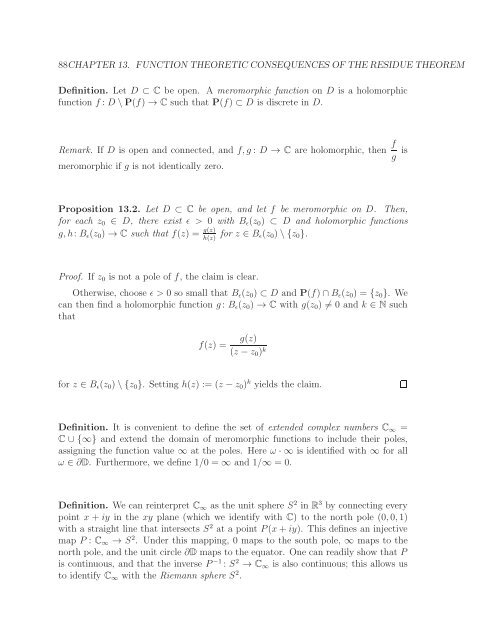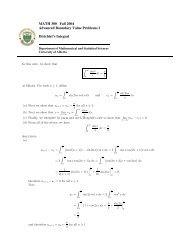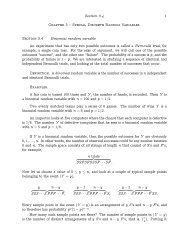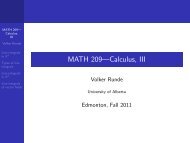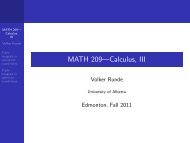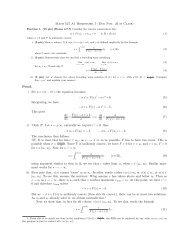Math 411: Honours Complex Variables - University of Alberta
Math 411: Honours Complex Variables - University of Alberta
Math 411: Honours Complex Variables - University of Alberta
You also want an ePaper? Increase the reach of your titles
YUMPU automatically turns print PDFs into web optimized ePapers that Google loves.
88CHAPTER13. FUNCTIONTHEORETICCONSEQUENCESOFTHERESIDUETHEOREM<br />
Definition. Let D ⊂ C be open. A meromorphic function on D is a holomorphic<br />
function f: D\P(f) → C such that P(f) ⊂ D is discrete in D.<br />
Remark. If D is open and connected, and f,g: D → C are holomorphic, then f<br />
g is<br />
meromorphic if g is not identically zero.<br />
Proposition 13.2. Let D ⊂ C be open, and let f be meromorphic on D. Then,<br />
for each z0 ∈ D, there exist ǫ > 0 with Bǫ(z0) ⊂ D and holomorphic functions<br />
for z ∈ Bǫ(z0)\{z0}.<br />
g,h: Bǫ(z0) → C such that f(z) = g(z)<br />
h(z)<br />
Pro<strong>of</strong>. If z0 is not a pole <strong>of</strong> f, the claim is clear.<br />
Otherwise, choose ǫ > 0 so small that Bǫ(z0) ⊂ D and P(f)∩Bǫ(z0) = {z0}. We<br />
can then find a holomorphic function g: Bǫ(z0) → C with g(z0) �= 0 and k ∈ N such<br />
that<br />
f(z) = g(z)<br />
(z −z0) k<br />
for z ∈ Bǫ(z0)\{z0}. Setting h(z) := (z −z0) k yields the claim.<br />
Definition. It is convenient to define the set <strong>of</strong> extended complex numbers C∞ =<br />
C ∪ {∞} and extend the domain <strong>of</strong> meromorphic functions to include their poles,<br />
assigning the function value ∞ at the poles. Here ω ·∞ is identified with ∞ for all<br />
ω ∈ ∂D. Furthermore, we define 1/0 = ∞ and 1/∞ = 0.<br />
Definition. We can reinterpret C∞ as the unit sphere S 2 in R 3 by connecting every<br />
point x + iy in the xy plane (which we identify with C) to the north pole (0,0,1)<br />
with a straight line that intersects S 2 at a point P(x+iy). This defines an injective<br />
map P : C∞ → S 2 . Under this mapping, 0 maps to the south pole, ∞ maps to the<br />
north pole, and the unit circle ∂D maps to the equator. One can readily show that P<br />
is continuous, and that the inverse P −1 : S 2 → C∞ is also continuous; this allows us<br />
to identify C∞ with the Riemann sphere S 2 .


